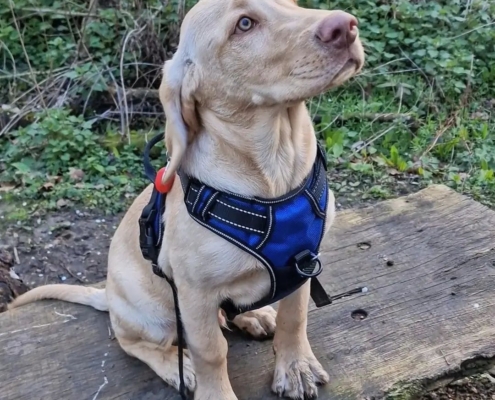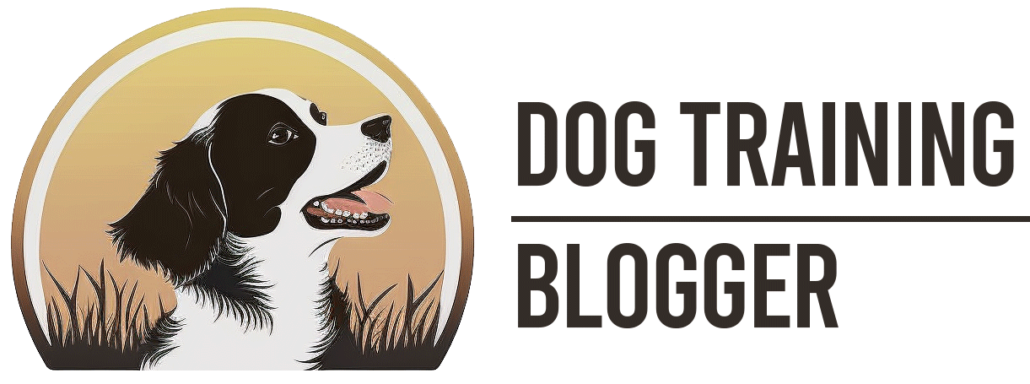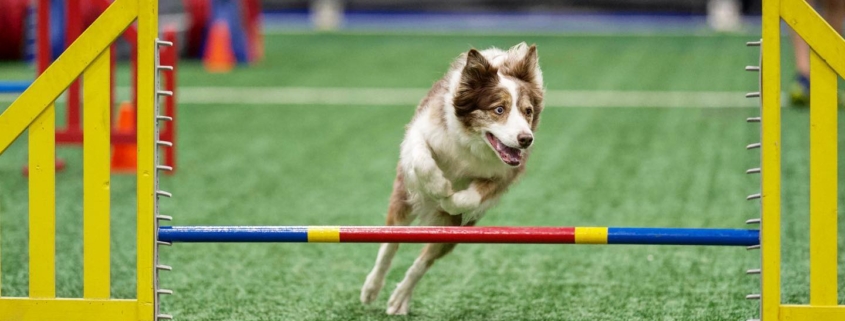The 5 Basic Commands: Sit, Stay, Come, Heel, and Down
Teaching your dog the five basic commands is an essential part of establishing a strong foundation for further training.
These commands, which are sit, stay, come, heel, and down, play a crucial role in developing a well-mannered, obedient dog.
For each of the commands I have done my best to keep it as simple as possible so it’s as easy as possible for you to teach your dog to five basic commands.
So with that in mind for each command below there are just five simple steps to each command and included a couple of tips to ensure your success with the 5 basic dog training commands.
| Key Takeaways |
|---|
| The five basic commands are essential for a well-trained dog: sit, stay, come, heel, and down. |
| Start training with the sit command, using treats or toys as positive reinforcement. |
| Teach the stay command by gradually increasing the duration, distance, and distractions. |
| The come command is vital for your dog’s safety, and it’s important to practice it in various environments. |
| The heel command helps improve your dog’s leash manners and keeps them close to you during walks. |
| Use the down command to encourage calm behavior and help your dog settle in various situations. |
| Be patient, consistent, and use positive reinforcement throughout the training process. |
| Practice the commands regularly to reinforce and maintain your dog’s obedience and manners. |
Sit Command
The “sit” command is the most fundamental obedience command and serves as a foundation for many other behaviors.
It helps your dog learn self-control, focus, and polite manners. Teaching your dog to sit on command can also prevent unwanted behaviors like jumping on people or furniture.
How to teach your dog the “Sit” command in 5 easy steps
Step 1:
Get your dog’s attention Stand in front of your dog with a treat in hand. Hold the treat slightly above their nose to catch their attention.
Step 2:
Raise the treat Slowly raise the treat above your dog’s head. As your dog’s nose follows the treat, their bottom should naturally lower to the ground.
Step 3:
Add the cue As your dog’s bottom touches the ground, say the word “sit” in a clear and upbeat tone.
Step 4:
Reward and praise Immediately reward your dog with the treat and plenty of praise when they sit. This positive reinforcement will help them associate the word “sit” with the action and the reward.
Step 5:
Practice and consistency Practice the sit command several times a day in short training sessions. Be consistent with your cues, rewards, and praise, and your dog will quickly learn to sit on command.
Sit Command Tips
Tips for reinforcing and maintaining the sit command:
- Practice in various locations and with different distractions to help your dog generalize the command.
- Use the sit command in everyday situations, like before putting on the leash or waiting for their meal.
- Be patient and remember that every dog learns at their own pace.
As a dog trainer, even for your own dog, positive reinforcement is a key to success. There are other methods, however, this is the wildly accepted as the easiest and best method for dog training (and the nicest too!).

Stay Command
The “stay” command teaches your dog to remain in one place until you release them, promoting self-control and impulse management.
It is particularly useful in situations where your dog’s safety or the comfort of others is at stake, such as when guests visit your home or when you’re near a busy street.
How to teach your dog the “Stay” command in 5 easy steps
Step 1:
Start with the sit command Have your dog sit, either by using the previously taught sit command or by gently guiding them into a sitting position.
Step 2:
Introduce the stay cue Stand in front of your dog and extend your arm with your palm facing your dog while saying “stay” in a calm and firm tone.
Step 3:
Take a step back After giving the stay cue, take a step back. If your dog remains in the sitting position, immediately return to them and praise them with a treat.
Step 4:
Gradually increase distance and duration As your dog becomes more comfortable with the stay command, slowly increase the distance between you and your dog, as well as the duration of the stay. Remember to always return to your dog to reward them, rather than calling them to you.
Step 5:
Release your dog Teach your dog a release word, such as “okay” or “free,” to signal that they can move from the stay position. Make sure to use the release word consistently to avoid confusion.
Stay Command Tips
Tips for reinforcing and maintaining the stay command:
- Practice in various environments with different distractions.
- Be patient and increase distance and duration gradually.
- Always reward your dog for a successful stay, even
Heel Command
The “heel” command teaches your dog to walk calmly by your side without pulling on the leash. This command is essential for enjoyable, controlled walks and helps to prevent your dog from getting into potentially dangerous situations.
How to teach your dog the “Heel” command in 5 easy steps
Step 1:
Begin with your dog in a sitting position Start with your dog sitting beside you, with their head level with your left leg (or right leg if you prefer).
Step 2:
Introduce the heel cue Say the word “heel” in a clear, upbeat tone while holding a treat in your hand. Make sure your dog is focused on the treat.
Step 3:
Start walking Begin walking with your dog, holding the treat close to your side at their head level. As your dog follows the treat, they should remain close to your side.
Step 4:
Reward and praise Reward your dog with the treat and praise when they walk beside you in the correct position. This positive reinforcement will help them associate the word “heel” with the action and the reward.
Step 5:
Practice and consistency Continue practicing the heel command during your daily walks, gradually reducing the use of treats as your dog becomes more proficient.
Heel Command Tips
Tips for reinforcing and maintaining the heel command:
- Practice in various environments and with different distractions.
- Use a consistent verbal cue and hand signal.
- Be patient and remember that some dogs may take longer to learn the heel command.
Consistency with all of these commands is absolutely key to your success. You can learn more about consistency and dog obedience training here.

Down Command
The “down” command teaches your dog to lie down on command, which is useful in many situations, such as when you need them to be calm or to settle in a specific location.
How to teach your dog the “Down” command in 5 easy steps
Step 1:
Get your dog’s attention Stand in front of your dog with a treat in hand, making sure they are focused on the treat.
Step 2:
Lower the treat to the ground Slowly lower the treat to the ground between your dog’s front paws. As your dog’s nose follows the treat, their body should naturally lower to the ground.
Step 3:
Add the cue As your dog’s body touches the ground, say the word “down” in a clear and upbeat tone.
Step 4:
Reward and praise Immediately reward your dog with the treat and plenty of praise when they lie down. This positive reinforcement will help them associate the word “down” with the action and the reward.
Step 5:
Practice and consistency Practice the down command several times a day in short training sessions. Be consistent with your cues, rewards, and praise, and your dog will quickly learn to lie down on command.
Down Command Tips
Tips for reinforcing and maintaining the down command:
- Practice in various locations and with different distractions.
- Use the down command in everyday situations, such as before allowing your dog to greet visitors.
- Be patient and remember that every dog learns at their own pace.

Come Command
The “come” command, also known as the recall, is essential for your dog’s safety and can help prevent potentially dangerous situations. It teaches your dog to return to you when called, regardless of distractions.
5 Steps to Teach Your Dog the Come Command
Step 1:
Start in a controlled environment Begin teaching the come command in a safe, enclosed area where your dog won’t be distracted or tempted to run off.
Step 2: Get your dog’s attention Call your dog’s name and use a unique cue word, such as “come” or “here,” in a clear, upbeat tone.
Step 3:
Reward and praise When your dog comes to you, immediately reward them with a treat and lots of praise. This positive reinforcement will help them associate the word “come” with the action and the reward.
Step 4:
Practice and consistency Practice the come command daily, gradually increasing the distance between you and your dog and introducing
distractions. Be consistent with your cues, rewards, and praise, and your dog will quickly learn to come when called.
Step 5:
Gradually transition to more challenging environments Once your dog has mastered the come command in a controlled environment, begin practicing in more challenging settings, such as parks or areas with other dogs.
Come Command Tips
Tips for reinforcing and maintaining the come command:
- Practice in various environments and with different distractions.
- Use a long leash or a fenced area to ensure your dog’s safety during training.
- Always reward your dog for coming when called, even if they initially hesitated or took longer than expected.
Conclusion
Mastering the five basic commands, sit, stay, come, heel, and down, is crucial for establishing a strong foundation in dog training.
By following the step-by-step guides above you’ll be well on your way to becoming an expert dog trainer and having an expert dog too!
Remember to be patient, and consistent, and always use positive reinforcement to encourage your dog’s progress. See the article on consistency in dog obedience training we wrote recently, as this is super important for both you and your dog.
With dedication and practice, your dog will soon become a well-mannered, obedient dog and you’ll be a pro dog trainer too.
Brain Training For Your Dog




